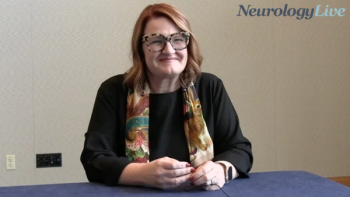
Afterimage Duration Significantly Longer in Migraine With Aura Than Without
Key Takeaways
- Patients with migraine with aura (MwA) have longer afterimage durations than those without aura (MwoA) and healthy controls (HCs).
- The study suggests cortical hyperexcitability and delayed habituation in MwA patients, indicating different pathophysiology from MwoA.
Afterimage duration was more prolonged in patients with migraine with aura than those without, suggesting differing underlying pathophysiology between the two subtypes despite the exact mechanisms remaining unclear.
In a recently published cross-sectional study, findings revealed that among patients with migraine, those with aura (MwA) had significantly longer afterimage duration than compared with those without aura (MwoA) as well as healthy controls (HCs). Afterimage duration–the length of time an image lingers in a person’s vision after exposure to a bright or high-contrast stimulus–can provide insight into visual processing abnormalities, especially in neurological conditions.
Researchers conducted a series of experiments to assess afterimage duration. The first tested viewing distance (30-50 cm), screen brightness (0%, 50%, 100%), and ambient lighting, with measurements taken in random order every 60 seconds. The second experiment used fixed conditions (50 cm, 50% brightness) and instructed participants not to blind during testing; if blinking reactivated the afterimage, a second latency was recorded. The third experiment followed the same setup but varied the stimulus color (red vs black), with 10 randomized trials per color and a 24-hour washout between sessions.
Led by Florian Rimmele, a professor in the Department of Neurology at the University of Rostock, the study featured 174 patients, 40 of whom had MwA, 53 with MwoA, and 81 who were HCs. In the second experiment, data showed that afterimage duration was significantly longer in patients with MwA (mean, 12.6 s [SEM, 2.6]) compared with HCs (mean, 5.8 s [SEM, 1.0]; P = .002). Notably, investigators found no significant difference between those with MwoA (mean first latency: 7.7 s [SEM, 1.6]; second latency: 2.6 s [SEM, 0.6]; P = .800) compared with HCs.
Looking closer at the findings, results revealed that the duration of the afterimage was not significantly longer for the first latency (P = .250) but was for the second latency (P = .004) in MwA compared with MwoA. On PHQ-9 sum score, patients with MwA reported a mean score of 9.4 (SD, 1.2), whereas those with MwoA had a score of 7.2 (SD, 0.7) and HCs had a score of 3.8 (SD, 0.4), although there was no correlation between afterimage duration and the PHQ-9 score in any of the 3 groups.
"Neither chromatic nor achromatic stimuli had any effect on afterimage duration,” Rimmele et al wrote. "It seems probable that the afterimages have a retinal origin with subcortical and/or cortical modulation. The differences between MwA and MwoA indicate that the pathophysiology may be different. Furthermore, the present study revealed that patients with MwA more commonly showed a habitual deficit to the stimulus as compared to HCs, suggesting that cortical hyperexcitability is a modulating factor of afterimages in MwA."
READ MORE:
Experiment 3, which further examined 10 patients with MwA and 10 HCs, once again highlighted the longer afterimage duration among those with MwA (mean, 8.4 s [SEM, 1.2] for black; mean, 8.9 s [SEM, 1.2] for red) relative to HCs (mean, 4.8 s [SEM, 0.4] for black; mean, 5.6 s [SEM, 0.5] for red; P = .030). No significant differences in afterimage duration were found between groups after the first stimulus, but from the second measurement onward, patients with MwA showed longer latencies than HCs. Overall, this suggested a delayed habituation effect in the migraine group, as their latencies decreased more slowly over repeated exposures.
"The results of Experiment 3 provide compelling evidence against a purely retinal origin of afterimage duration without further modification, given that an at least partially targeted stimulation of retinal rods and cones did not affect afterimage duration,” the study authors wrote.1 "The thalamus, where the retinal ganglion cells are switched to the LGN and the receptive fields are retinotopically mapped, also plays an important role in central sensitization processes in migraine pathophysiology."
This study had several limitations to consider. Afterimage duration was not assessed longitudinally across the migraine cycle, limiting insights into differences between attack and interictal phases. Electrophysiological measures of cortical hyperexcitability, such as contingent negative variation, were not included in the study but could enhance future research. Additionally, the relatively small sample size, especially in Experiment 3's four-factor analysis, may affect generalizability. Nonetheless, key strengths include careful control of experimental variables, efforts to minimize blink-related artifacts, and validation of findings in a second patient cohort.
REFERENCES
1. Rimmele F, Teuber J, Müller B, et al. Afterimage duration differs for migraine with or without aura. Headache. Published online March 28, 2025. doi:10.1111/head.14934
Newsletter
Keep your finger on the pulse of neurology—subscribe to NeurologyLive for expert interviews, new data, and breakthrough treatment updates.


































